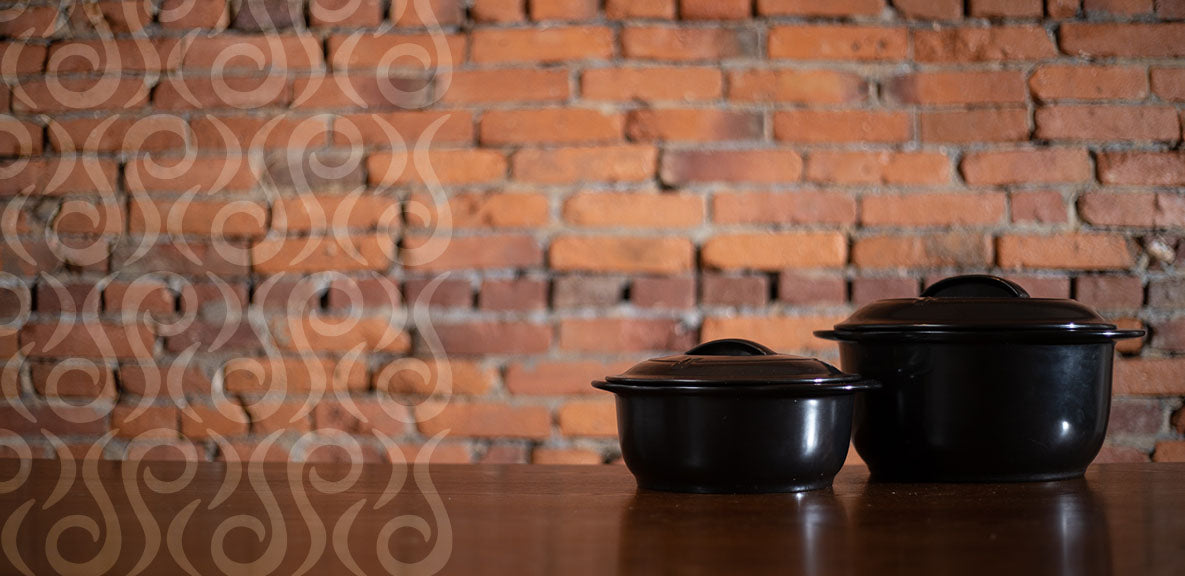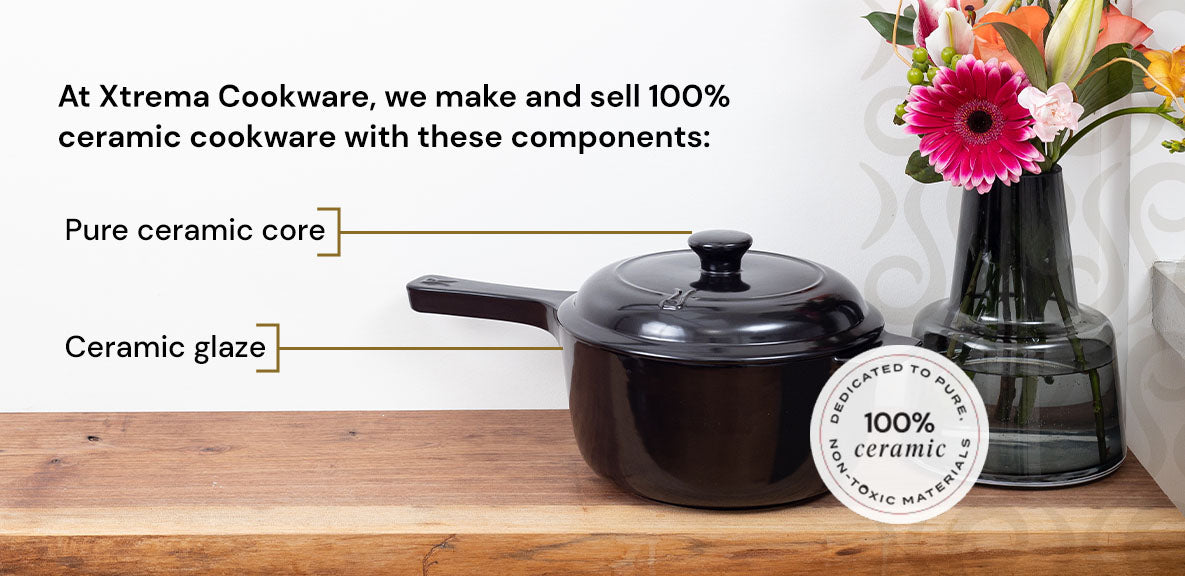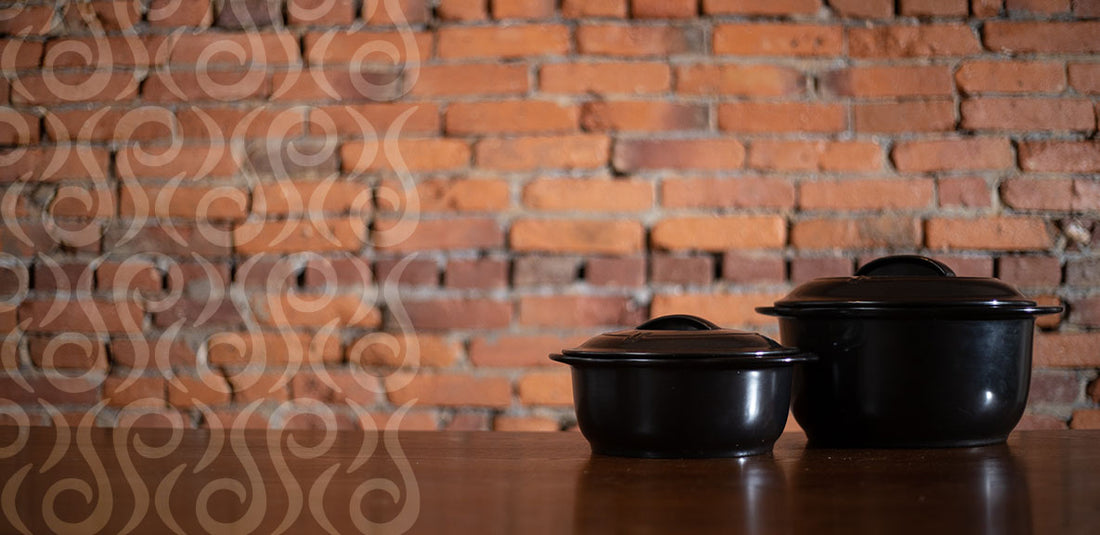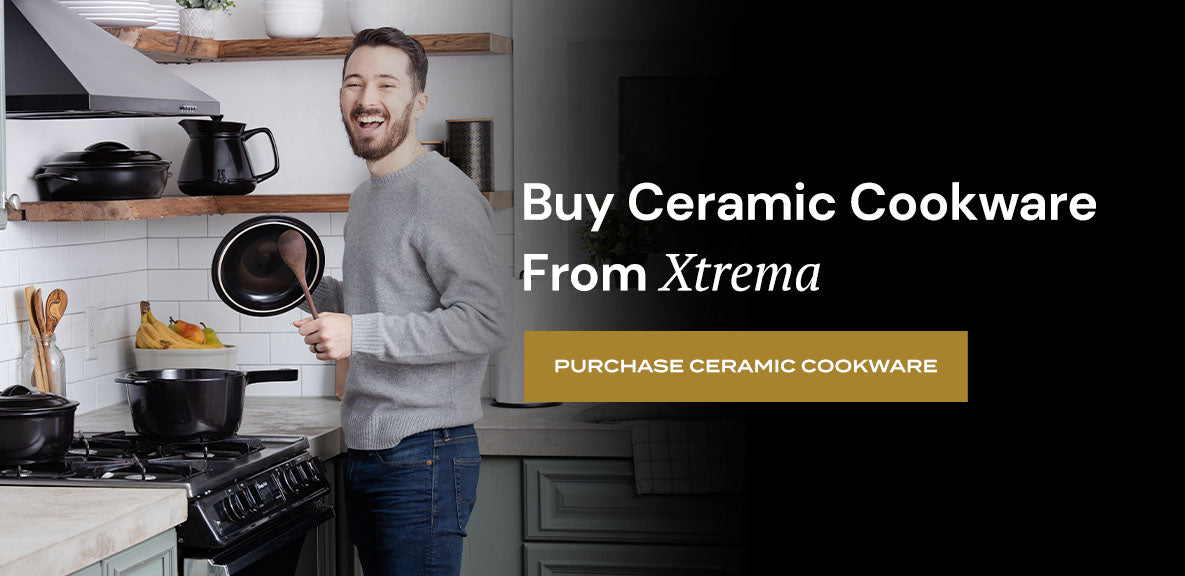
Over the years, many shoppers looking for a new set of pans have learned about the dangers of two substances in cookware coatings — perfluorooctanoic acid (PFOA) and polytetrafluoroethylene (PTFE). Dupont's Teflon brand popularized these substances in cookware in the mid-1900s. After extensive research, backlash and regulatory action, Teflon phased out PFOA, but its successor, PTFE, still persists and can release toxic fumes at high heat.
If you're looking into ceramic cookware, you might be aware of these issues and want a safer, healthier alternative. Ceramic cookware is the perfect solution, but not all ceramic cookware is created equally. Discover what ceramic cookware is made of and the different types in this guide so you can cook with peace of mind and create healthy meals for friends, family and yourself.
What Is Ceramic Cookware Made Of?
Ceramic cookware is made from — you guessed it — ceramic materials. Ceramic cookware is made with kiln-fired clay. Typically, this clay is a type of fireclay, which is highly heat-resistant and doesn't deform or melt at high temperatures. However, not all ceramic cookware is the same. For pots and pans, in particular, you'll notice two terms:
- Ceramic-coated: Most ceramic-coated cookware has a metal core and a thin ceramic coating on top.
- 100% ceramic: Pure ceramic cookware only contains ceramic materials and has no metal core.
You may be familiar with the term ceramic — it's the material that a lot of pottery creations have been made from for thousands of years. You'll find ceramics in a variety of products, including bricks, tiles, plates, watches, cars, and even spaceship tiles and the nose cones of airplanes. These days, the word ceramic appears on cookware, too, as it's now a popular option for cooking due to its safety.
Ceramic materials are inorganic and nonmetallic, which is an incredibly broad classification, but the most common example is clay. An important distinction for ceramics is that manufacturers fire them in kilns at high temperatures, which turns soft ceramic substances into hard, heat-resistant products. Ceramics are not all brittle and delicate — their composition and firing temperature create a variety of ceramic types that range in durability and hardness.
The Materials Used in Ceramic Cookware
While ceramic cookware is made from ceramic materials, the two different kinds of ceramic products contain varying materials. We'll discuss the material differences between these two types of ceramic cookware below so that you can make a more informed decision for your next purchase.
Ceramic-Coated Cookware
Ceramic-coated cookware is the most common type because it's cheaper to produce than pure ceramic cookware. Ceramic-coated cookware typically has two components:
- Metal core: The metal that forms the base of ceramic-coated cookware is often made from aluminum, but it can also be cast iron or stainless steel, depending on the manufacturer.
- Ceramic coating: The term "ceramic coating" is actually slightly misleading. While most ceramic coatings do contain ceramic materials, manufacturers also add a type of sand called silica to the ceramic mix. This addition turns the ceramic coating into a smooth, slick surface called a "sol-gel" coating.
Ceramic coatings are not very durable in general. The coating can chip away and wear down over time, causing more sticking. Also, they may not hold up well at high temperatures, so you can't use them on high heat or put them in the dishwasher.
100% Ceramic Cookware
When you choose pure ceramic cookware, you get a piece of equipment that is purely ceramic with no silica-based additions. At Xtrema Cookware, we make and sell 100% ceramic cookware with these components:

- Pure ceramic core: We create our ceramics with fireclay, water, natural minerals and oxides and fire them at 2,500 degrees Fahrenheit in a kiln powered by natural gas. The fireclay mix we use contains natural materials, and various inorganic oxides, which allow the clay to withstand incredibly high temperatures.
- Ceramic glaze: We do not use a ceramic or nonstick coating, as the surface of our ceramic cookware naturally becomes nonstick with the use of oil and heat. We use a ceramic glaze to seal and protect our ceramic products.
Our 100% ceramic cookware is far more durable than ceramic-coated cookware. Xtrema's pure ceramic cookware will not scratch, flake, stain or degrade in high heat, such as on stovetops, campfires, grills, dishwashers, ovens and more. They last a long, long time. Additionally, they're easy to clean and dishwasher-safe. If you'd prefer to handwash your cookware, use warm, soapy water and any nonmetal scour pad, silicone scrub brush or natural fiber scrub brush.
Health and Environmental Considerations
Beyond durability, you can consider the safety and environmental impact of your choice in cookware. Both ceramic-coated and 100% ceramic cookware are good choices in regard to health, especially when compared with Teflon. However, 100% ceramic cookware offers several benefits over ceramic-coated cookware:
- Sustainable: Instead of becoming unusable and needing replacement every few years, Xtrema's ceramic cookware can last decades or even lifetimes with the correct care. By buying long-lasting cookware, you can create less waste and consume less energy.
- Toxin-free: Xtrema ceramic cookware is nontoxic and does not contain PFOA, PTFE, glues, dyes, polymers or sol-gel. Our cookware will never leach chemicals into your food.
- Bacteria-resistance: The special ceramic glaze we use in our cookware is bacteria-resistant, and your food won't stain or leave behind small particles on the surface.
- Thorough testing: We are dedicated to ensuring the safety of our products, which is why send our products to third-party labs to test every shipment for extractable lead and cadmium. This allows us to adhere to California Prop 65 standards, which we've done for over 15 years. Plus, we share our test results publicly on our site.
Buy Ceramic Cookware From Xtrema
Make the switch to Xtrema Cookware today! We have a wide range of cookware, bakeware, teaware, storage equipment and cooking accessories you can count on for safety and durability.
Our ceramic cookware is a lifetime investment, and we stand behind our quality by offering customers a 10-year warranty on most products. When accidents happen, our forever replacement program will make the replacement process hassle-free. What's more, your first replacement is on us! If you're still not convinced, take a look at the thousands of happy customer reviews we've received over the years.
Purchase your own Xtrema ceramic cookware to see the benefits for yourself, and don't hesitate to contact us if you have any further questions.

